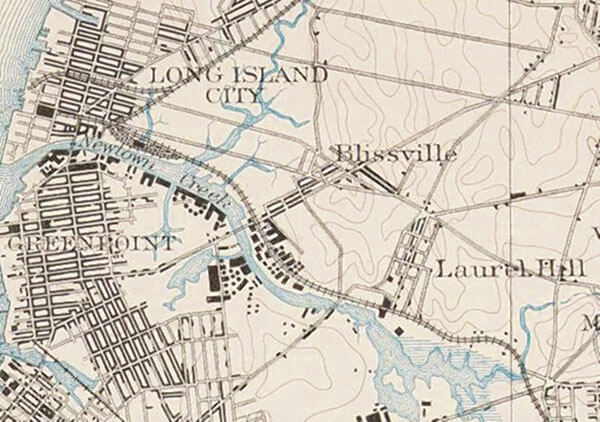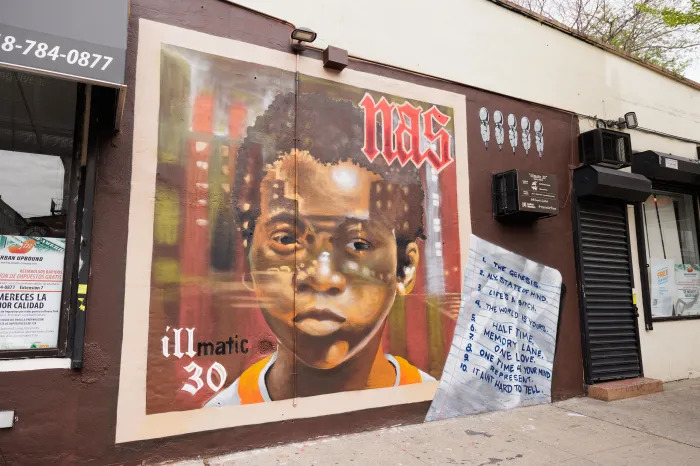By Tammy Scileppi
Did you ever wonder where fortune cookies came from? You may be interested to find out that those crispy little nuggets you break open were probably made in Blissville, a remote corner of Queens, which happens to have the world’s largest fortune cookie factory.
This mysterious place — nestled in the shadows of midtown Manhattan — is also home to a company called Colbar, known for making replicas of the Statue of Liberty.
A dynamic working-class neighborhood, Blissville is located off the beaten path along Newtown Creek, south of the Long Island Expressway and west of Calvary Cemetery. Think of it as a triangle cut off by physical barriers from Queens and the rest of the city.
Only a few hundred multi-ethnic residents live in this close-knit global community —ranging from Polish, Irish, and German, to Pakistani, Indian, and Bangladeshi, to Central and South Americans, to a small population of African Americans.
And you’ll only find 80 or so houses there — with no white picket fences — according to Brooklyn-based filmmaker and media artist Hank Linhart, who stumbled across the enigmatic neighborhood about 30 years ago, during his travels. So intrigued was he by its quirkiness and the resilient attitudes of the locals who live and work there, Linhart felt compelled to create what he calls a “docu-poem,” in the form of a 59-minute film, as a tribute to that little town that could.
“Blissville: An Investigation” includes footage shot in the late 1980’s when Linhart — who formerly taught video at NYU, SVA, and Pratt Institute — was living in Williamsburg, along with new material filmed since he continued his project in 2012. He took a long break to raise his daughter; make a 100th year commemoration video about the 1904 burning and sinking of the General Slocum in NYC harbor (which until 9/11 was New York’s largest disaster); and became a college administrator.
The video premiered at the New-York Historical Society and was aired on several PBS stations.
You can view “Blissville” at four libraries across Queens, from April 5 through April 26. Ridgewood Library, located at 20-12 Madison St., is hosting a screening April 5, while Maspeth Library, located at 69-70 Grand Ave., will show the film April 9. You can also catch the film April 19 at the Sunnyside Library, located at 43-06 Greenpoint Ave., or April 26 at the Woodside Library, located at 54-22 Skillman Ave.
All screenings will begin at 6 p.m. and are free to attend.
The video was also screened at a variety of locations state-wide, including at the Queens Historical Society, thanks to a grant from New York State Council on the Arts.
Perhaps the most interesting part of the film are the filmmaker’s interviews with people on the street. Other highlights include footage centered around the town’s industries, and viewers also learn about its strange history. Turns out a nearby Romani village — once known as the “Gypsy Ellis Island” — that thrived in the 1930’s, had once been the largest gathering place for Romani in the country. Linhart discovered a church where “gypsies” got married, and noted that the village was razed to make way for a highway to the 1939 World’s Fair.
Additionally, Blissville once boasted an Afghan bakery, a sushi factory, and a facility that crushed cars.
“The Blissville story is important because it is the story of community,” said Linhart. “In this day of gentrification and neighborhoods being destroyed for high rise construction, it is emblematic of New York.”
While recounting the odd circumstances behind the inspiration for his film, he recalled a surreal experience he had while visiting Calvary Cemetery.
“I saw a woman eating fruit from a tree. Having worked for various fruit farms upstate — I used to make a living pruning grapevines and then apple trees — I was curious what she was eating,” Linhart said. “I tried to talk with her, but she ran away. Then later, I noticed an old photograph in the deli that said ‘Blissville Market.’ I began asking people where the name ‘Blissville’ came from.”
The nabe is named after Neziah Bliss, a Brooklyn businessman who helped develop North Brooklyn, according to the Greater Astoria Historical Society. Linhart pointed out that the name is, of course, quite remarkable, “and conjures or invokes one’s personal images of a Blissville, which the actual town aligns with, or is in contrast to.”
Apparently, the latter may prove to be true. Many Blissville residents are up in arms because the city will open a third homeless shelter in the area, this time at the Fairfield Inn by Marriott. It’s clear that this tiny pocket of Queens is overwhelmed and feels it is being asked to carry a burden beyond its fair share. Concerned neighbors met at St. Rafael’s Church on March 15 to rail against The Department of Homeless Services.
Despite the issues they’ve had to deal with, the future seems bright for Blissville’s community of close-knit neighbors, as they go about their daily lives — still removed from the rest of Queens, but now recognized as a unique part of the borough thanks to Linhart’s film, which sheds light on this quirky yet dynamic neighborhood.






























